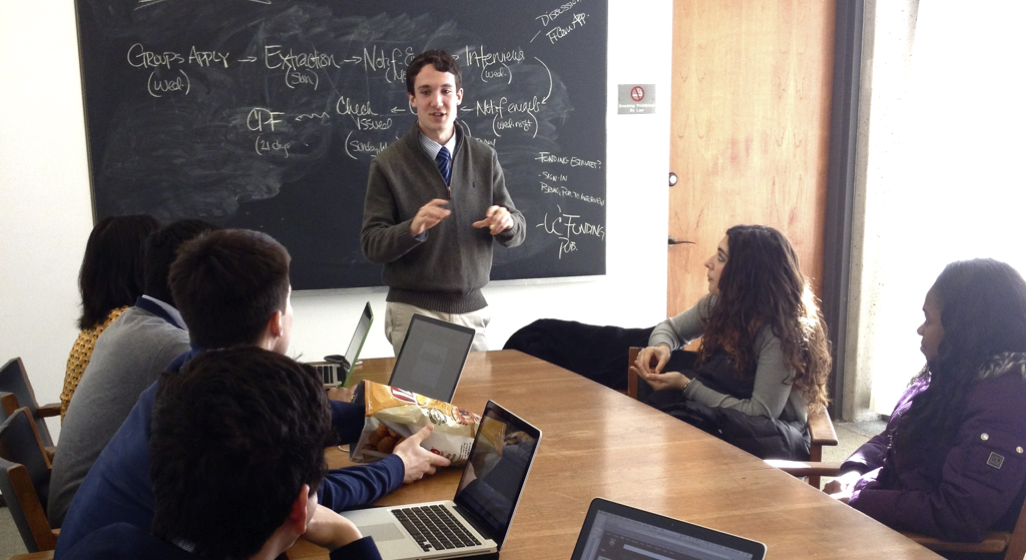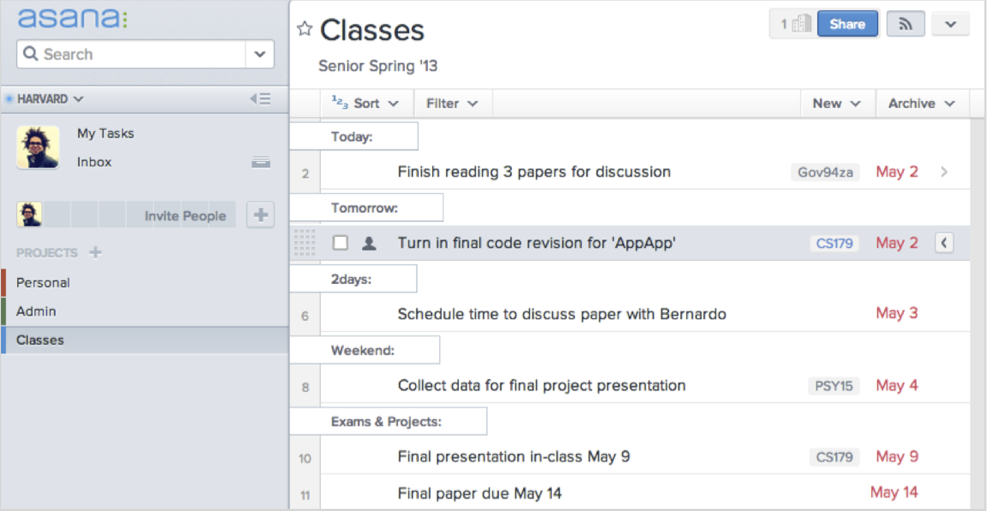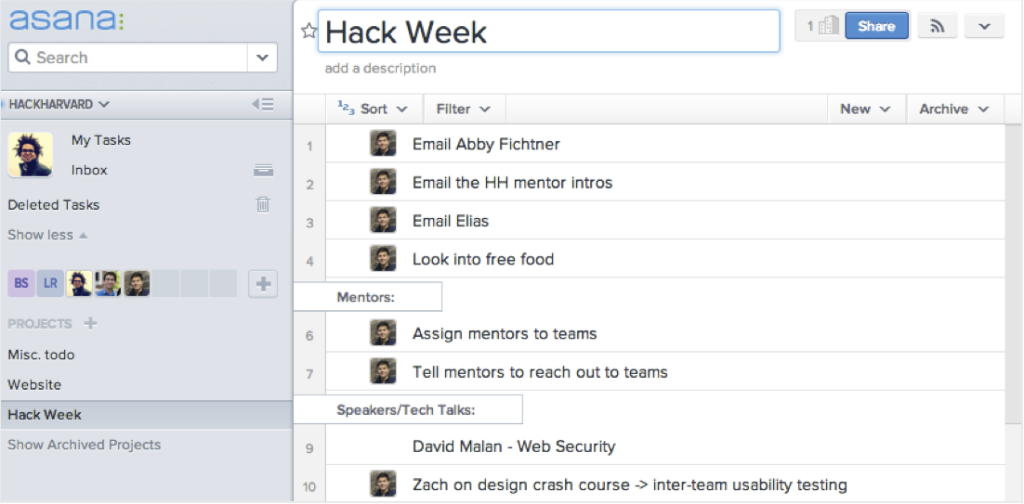Using Asana on campus: Q&A with Peter Boyce, Harvard Class of 2013

For students, keeping up with classes, social life, activities, and everything in between can be challenging. Staying on top of assignment deadlines, exams, and group projects is a massive headache and one that Peter Boyce, a class of 2013 grad from Harvard University, made a point of avoiding. Peter chatted with us about discovering Asana while starting a student group, “Hack Harvard”, and how Asana became the place where he organizes everything−his school work, personal tasks, activities, and now his work day.
Why did “Hack Harvard” choose Asana?
I started using Asana spring of my sophomore year when the beta version came out. I was working with some friends to start a group called Hack Harvard and found that it got increasingly difficult to coordinate across all of us. We were working on putting together a week-long accelerator program, which involved hosting student events and programming lessons from professors and alumni. Basically, we needed a way to keep all of our heads on straight so we could pull it all off.
We gave Google Docs a shot, but it didn’t work well with all of the little tasks we needed to keep track of. We tried Yammer, but it didn’t fit the needs of our organizers, so then we returned to Google Docs with a more structured approach. At the end of the day none of those tools were working for us. When we started using Asana we found it to be light and simple to pick up on and easy to use. Because Asana’s focus is on tasks and action items, we found the ability to assign to different users to be super dynamic and it was exactly what we needed. The basic doc and feed approaches just weren’t enough. We needed to structure data and people’s responsibilities in a more flexible (and comprehensive way) than Google Docs or Yammer provided.
When did you decide to use Asana for your academic work?
In the beginning, I didn’t think that I would use Asana for personal, everyday tasks, and school work. Like I mentioned, I had used it with the Hack Harvard team and during summer internships, but putting my academic life in Asana hadn’t occurred to me.
But as Asana rolled out new features, particularly calendar integration and the ability to attach Dropbox files, I realized it could be be a central platform for managing all the content I had to deal with in school: assignment deadlines, PDF readings for class, and instructions from my professor. Everything could be stored neatly in Asana, and also accessed in a unified way on my phone or laptop.
Can you explain how you used Asana to stay on top of school work?
A big part of organizing my work was making sure that I made different workspaces for my classes and for administrative tasks. For classes I kept it simple, using colon’s to create different headings in the project and copied that same format for the administrative workspace which included tasks like registering for classes or checking my mail. These two workspaces are what defined my school life.
In my academic workspace I titled the project “classes” and made headers for five different categories; today, tomorrow, two days from now, the weekend and exam dates. From there I would give each class a tag that corresponded to the course number, for example Math105. This was great because it would clearly outline what I needed to do for each class over the span of a week. I could even filter by a course tag to have a laser-view into that specific course’s workload. Not to mention being able to drag and drop tasks made it easy for me to move things around if I wasn’t able to get to those tasks. What I found even more helpful was the calendar functionality — it was perfect for assignments! I was able to pick a due date and associate it with each task to make sure I never dropped the ball on an assignment or studying for an exam.
Asana brought together all of the components I needed to stay on track with school work. I knew exactly what I needed to do today and tomorrow, and I even had a sense of what my workload looked like over the weekend.
What’s more, I had a nice running tab of all the tests I had to take. Exams may have seemed far away, but you’d be surprised how easily they’d creep up on you. Asana helped me to have all this information in one organized place.
For what project was Asana most instrumental?
I’d say that Asana was essential to pulling off the two biggest events we had this year through the Hack Harvard group. One event we did was called “Evening of Ventures”, where we invited founders, engineers, venture capitalists and folks from the community to come out and share their experiences in technology as entrepreneurs and Harvard alums. Over 140 people in all came out to the event which was massive from a logistics standpoint.
We were able to make it all happen because we leveraged Asana. Planning events like Evening of Ventures or our annual Hack-Week requires a ton of moving pieces: booking rooms, handling reimbursements, buying food, processing applications, and connecting with both students and professors. Asana just made it easier for us to work together. A lot of the time with projects like this, the work can get shouldered by one or two people, but with Asana you can distribute the work across a team. As a result we were able to work with a bigger team and save a ton of time.
We didn’t spend much time in meetings. Instead it was more like, “Oh hey guys check out Asana to know what’s going on this week”. This kept everyone on track without having to sit in a room together for a half hour. Another big thing Asana helped with was removing all of the email clutter. Chains get ridiculously long and we found that we were way more efficient when we replaced email and stuck with the nuclear unit which was the task. I think if everyone would just use Asana we’d all be better off.
What is next for you and Asana?
Actually its funny that you ask that. My Asana task for this weekend was to “Set up Asana for work.” Now that I’ve graduated, I’ve joined a venture capital firm and I am integrating Asana into my workflow.
The first few weeks of work have been super busy and hectic. A lot of information and a lot of new processes. What has been missing for me personally is the organization and structure of Asana. It is on my phone. I can use it with my colleagues. It’s how I’m going to make sure I get things done.
To learn more about using Asana on campus visit asana.com/uni.



